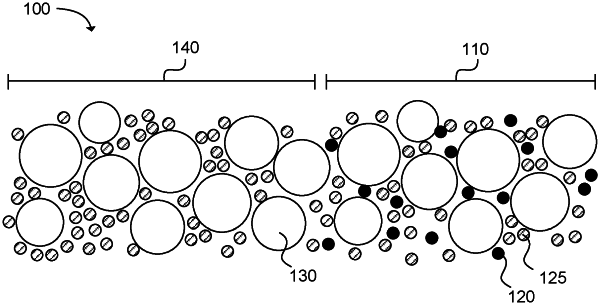| CPC B29C 64/165 (2017.08) [B29C 67/00 (2013.01); B33Y 10/00 (2014.12); B33Y 30/00 (2014.12); B33Y 70/00 (2014.12); B33Y 70/10 (2020.01); B29K 2995/0018 (2013.01)] | 11 Claims |

|
1. A 3-dimensional printing system, comprising:
a powder bed comprising a thermoplastic polymer powder having an average particle size from 20 μm to 100 μm;
an inkjet printer comprising:
a first inkjet pen in communication with a reservoir of a photoluminescent ink to print the photoluminescent ink onto the powder bed, wherein the photoluminescent ink comprises a photoluminescent agent, and
a second inkjet pen in communication with a reservoir of a fusing ink to print the fusing ink onto the powder bed, wherein the fusing ink comprises a fusing agent capable of absorbing electromagnetic radiation to produce heat, and wherein the second inkjet pen is to decrease an amount of fusing ink printed to portions of the powder bed adjacent to areas printed with the photoluminescent ink; and
a fusing lamp to expose the powder bed to electromagnetic radiation sufficient to fuse thermoplastic polymer powder that has been printed with the photoluminescent ink, the fusing ink, or both.
|